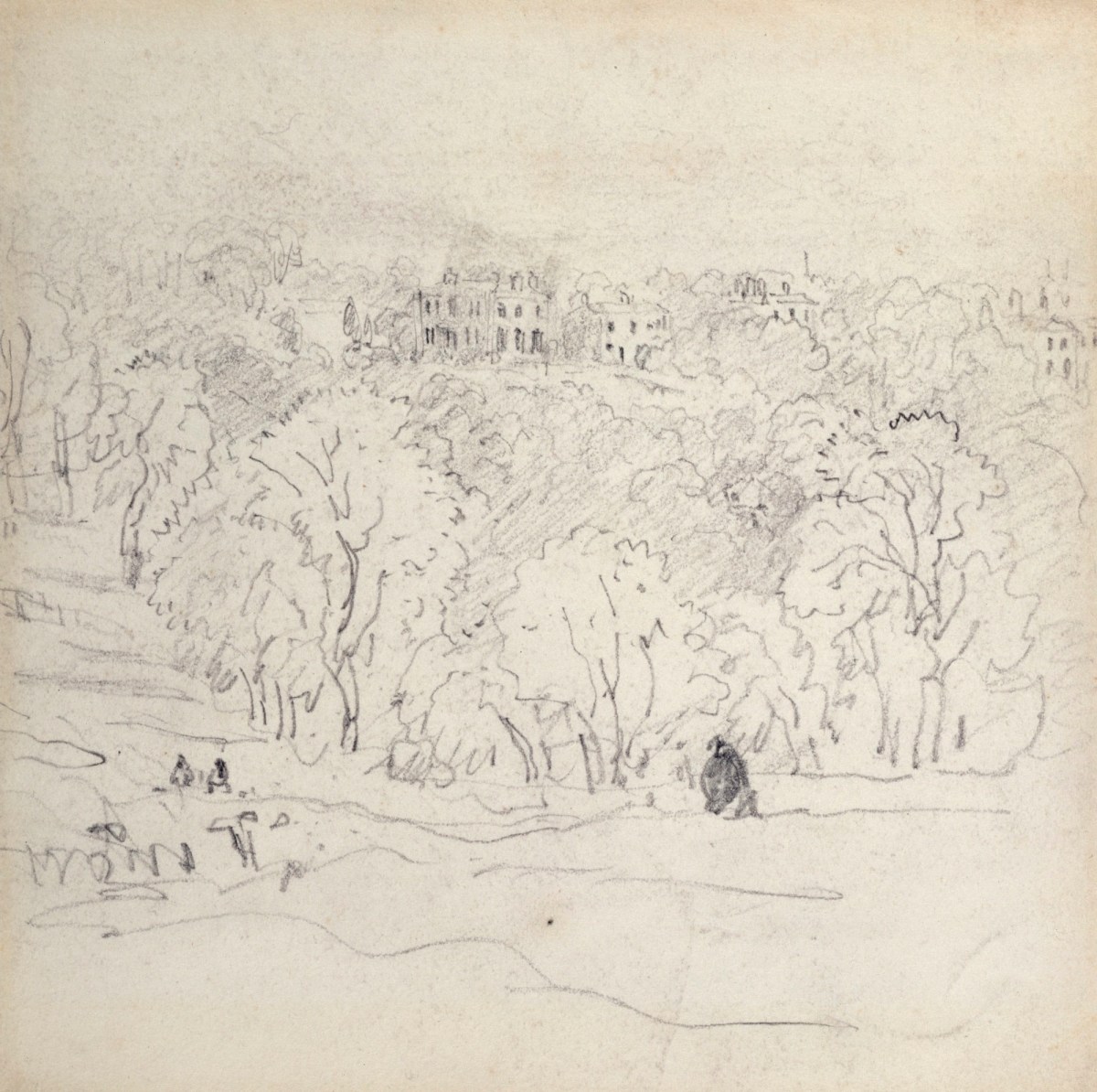
David Cox the elder, View of woods and houses from a hillside.
Pencil on wove paper. 208 mm x 201 mm. © Photo: Royal Academy of Arts, London. Photographer: John Hammond.
This image is not available to download. To licence this image for commercial purposes, contact our Picture Library at picturelibrary@royalacademy.org.uk
View of woods and houses from a hillside
Attributed to David Cox the elder (1783 - 1859)
RA Collection: Art
This work was drawn from a hillside and depicts the trees below and large houses in the distance.
The work has previously been titled Harlech Castle, Woods in Foreground, perhaps by the art dealers Abbott and Holder who sold it to Carel Weight RA. However, the famous Welsh castle does not appear to be any of the buildings in the distance, which have chimneys and large windows. The fact that the buildings are low-lying, and the castle actually sits on top of a hill, corroborates this view. The castle is also on the coast but the sea is not visible in this drawing. It is not a view from the hillside of the castle looking down on the surrounding landscape in the opposite direction to the coast, as the landscape is very mountainous, which is not reflected in the drawing. The sheet has possibly been cut down from a larger sheet or out of a sketchbook so making it more difficult to identify with certainty. The work has been attributed to David Cox, the elder, but no inscriptions corroborate this.
David Cox was born in Deritend, near Birmingham, in 1783, the son of a blacksmith. Having worked as a miniature painter and as a scene-painter in a theatre in Birmingham, Cox left for London in 1804. He first visited north Wales in 1805 and also exhibited his first watercolour at the Royal Academy the same year. Cox began teaching drawing to several pupils from the aristocracy soon after and also published books on the subject that were highly successful and led to him becoming, as Stephen Wildman writes, 'one of the most accomplished and successful watercolourists of his generation'.
Cox contributed drawings to Thomas Roscoe's Wanderings and Excursions in North Wales (1836) and South Wales (1837). For the former he drew two views of Harlech Castle, which were engraved by his friend William Radclyffe: Harlech Castle and The Snowdon Hills, from Harlech Castle, both of which are very dissimilar from this drawing.
Cox lived in Hereford, London and Birmingham during his lifetime. If this drawing has been correctly attributed to Cox, it is more likely that the view is from a hillside in one of these areas rather than the dramatic mountainous area of north Wales. The view from a hillside is quite similar to Cox's watercolour Windsor Castle, from the Sandpit Gate (1820-59, Victoria and Albert Museum).
Object details
208 mm x 201 mm
Start exploring the RA Collection
- Explore art works, paint-smeared palettes, scribbled letters and more...
- Artists and architects have run the RA for 250 years.
Our Collection is a record of them.



